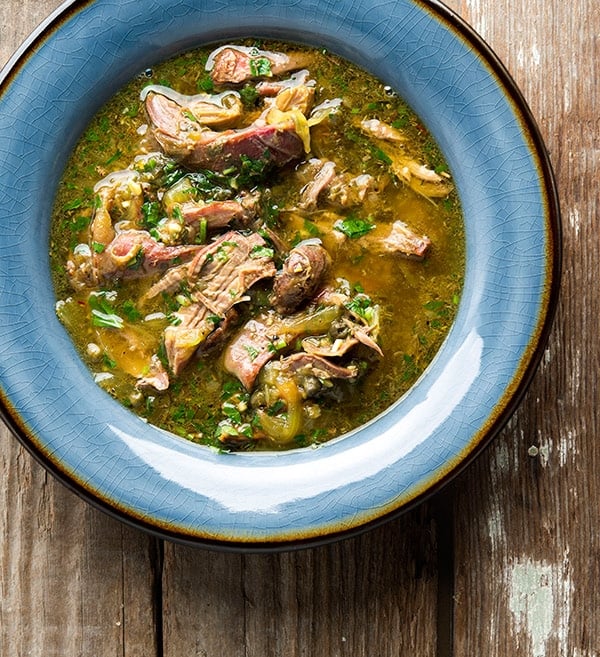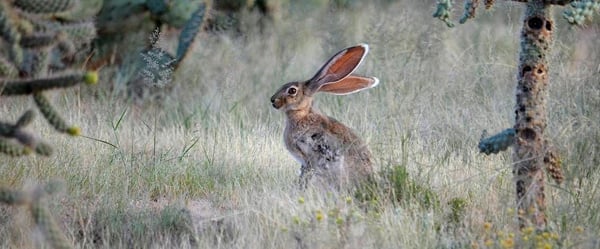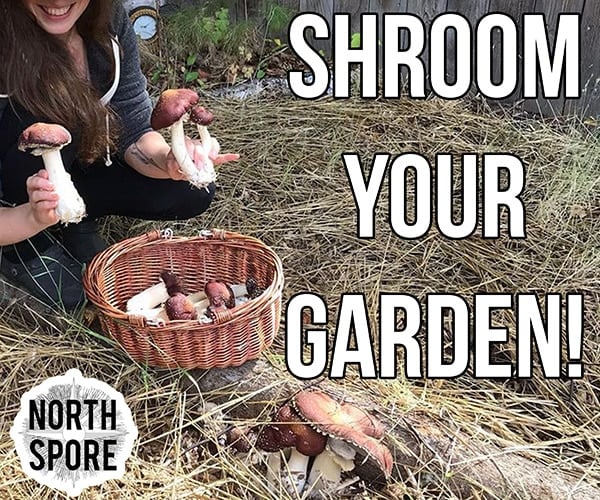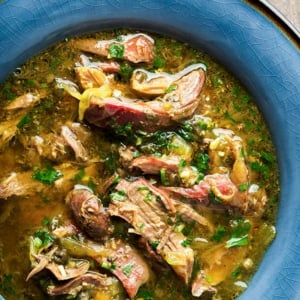As an Amazon Associate I earn from qualifying purchases.

There’s a reason few people eat jackrabbits in this country: For many, they are indelibly stained as poverty food, a meat of the Depression or the even harsher privations of the pioneer farmers who eked out a living on the sod of the Great Plains.
What’s more, non-hunters cannot buy jackrabbits, which unlike their cousins the true rabbits, will not cotton to domestication. And most hunters, who see these giant rabbits everywhere, rarely shoot them: Their minds are filled with cloudy notions about parasites, diseases and foul-tasting meat.
This is a pity, because jackrabbits are nothing more than American hares. Not a true rabbit, most hares have dark meat whose color falls somewhere between duck and beef. Hares live longer and are smarter than rabbits, and give birth to young that can hop away at a moment’s notice; rabbit younglings are pink and helpless.
Holly and I shoot hares, mostly black-tailed jackrabbits, whenever we get the chance. We do this for several reasons, mostly because they are gamey and delicious. Hares are more highly regarded in Europe, and I have many recipes for them from countries as disparate as Sweden and Sardinia.
That’s where my most recent hare stew came from.

I developed my recipe for a Sardinian hare stew from a rabbit dish called coniglio al guazzetto that I found in Giuliano Bugialli’s book Foods of Sicily & Sardinia and the Smaller Islands. It is unusual in that it uses capers as a major flavoring component. The other dominant flavors are saffron, which grows on the island, and red wine vinegar. It is a heady dish, great for cold weather.
If you cannot get hare, which is likely I am sorry to say (although you can buy real Scottish hare from D’Artagnan), I would substitute lamb first; that just seems more Sardinian to me. You could also go with rabbit or chicken, but make sure the chicken is as old as you can find — look for a stewing hen in Asian or Mexican markets.
How did jackrabbits and hares get to be so stigmatized? Part of the reason is because those cloudy notions wafting through hunters’ heads have an element of truth to them.
Jackrabbits, like all rabbits in this part of the world, can carry a disease call tularemia, which is no fun. You can tell by looking at the liver: If it is streaky with white marks, it may be infected. The meat will be fine, however, so long as you braise it well. Always wear gloves when butchering wild rabbits and hares in the West and you will be fine.
There is another unusual thing about the meat of jackrabbits — it lacks a certain protein (or amino acid, I can’t remember) that most other meats do, so if you eat nothing but jackrabbits, as many Great Plains pioneers did, you will actually develop malnutrition; it’s a little like contracting pellagra from eating too much corn. Once our ancestors realized this fact, they banished jackrabbits from their diet. Tossing the bunny out with the bath water, I’d say.
I would like to make the case for reintroducing hares to the American diet.
For starters, jacks are abundant — and there is no closed season on them in many states. That means you can shoot as many as you will eat, whenever you feel like it. And they freeze well. You should know that jackrabbits in hot weather are not nearly so tasty as those in the fall (the ones I used for the hare stew were shot in a pear orchard in September), and summer jacks can sometimes be attacked by botfly, which leaves icky sores on the hare’s back but does not normally affect the meat; botflies also affect other game animals, but the flies are usually gone by the time hunting season rolls around.
Another reason to eat more jackrabbits and hares is because they are big. Really big. One black-tailed jackrabbit can feed four easily, and Holly and I got four meals out of two jackrabbit forelegs plus four hind legs.
Still another pleasure of eating hares is their flavor. The dark meat is undeniably gamey, with an indescribable aroma and flavor that screams “wild.” It is not for everyone: One allegedly epicurean judge on Iron Chef turned her nose up at the wild hare she was served in “Battle Rabbit.” Keep in mind that snowshoe hares are very different — they are lighter in color and far milder, more like rabbit, actually. I like the lustiness of jackrabbit, however, especially with other strong flavors like the capers and saffron in the hare stew. A little goes a long way.
Which is probably the best reason why eating more jackrabbits and hares is a good idea in these tough economic times. Like I said, we got many meals out of a little more than one hare. The reason is because the meat is so flavorful you can plunk a dollop of stew on a bowl of polenta, or couscous, or rice, and be perfectly happy. We ate most of a loaf of bread when we first sat down to eat this stew. The only domestic animal I can think of that even comes close to the depth of flavor of a wild hare is an old chicken.
Eating this way brought me back to my old days as a graduate student and cub reporter. I was poor, and needed to make meat stretch. I developed an eating technique that made sure I got some sauce and a little bit of meat with every large spoonful of grain. I always left the choicest piece of meat for the last bite. It was — and is — a gratifying way to eat. It felt like I was satisfying my Champagne tastes on a Budweiser budget.
And that’s a good thing these days.
Sardinian Hare Stew
Ingredients
- 1-2 hares or rabbits
- 4 tablespoons olive oil
- 1/2 cup chopped parsley, plus another 1/4 cup for garnish
- 5 cloves garlic, chopped
- 1 large onion, chopped
- 1/4 cup capers
- Large pinch saffron
- 1 cup warm water, to bloom saffron
- 1/4 cup high-quality red wine vinegar
- Salt
Instructions
- Salt the hare or rabbit pieces well and set aside at room temperature for 30 minutes.
- Get the olive oil hot over medium-high heat in a large pot or Dutch oven. Pat the hare pieces dry and brown well in the pot. You might need to turn the heat down to medium. Do it in batches and take your time. Place the browned pieces in a bowl while you do the others. This could take 30 minutes.
- Meanwhile, chop half the capers. Get your tap water running as hot as it will go and fill a cup measure. Crush the saffron in your palm and sprinkle it into the hot water. Get every bit, and let this soak as the hare is browning.
- Once the meat is all browned, remove it to a bowl. Add the onion and saute until browned. Add the garlic and cook for 1-2 minutes.
- Add everything into the pot except the extra 1/4 cup parsley, nestling the hare pieces in tight. If the liquid does not come at least halfway up the sides of the hare pieces, add some more water. Do not add wine or stock — the point is to have pure flavors here. Cover tightly and simmer gently over low heat for at least 90 minutes. Hare needs longer, but chicken and domestic rabbit should be done by then. Check the hare after 2 1/2 hours; it should be close to falling off the bone. When it is, pull the meat out and strip it from the bone.
- Return it to the pot with the extra parsley and mix well. Turn off the heat and cover for five minutes. Serve over polenta, couscous, Sardinian fregula pasta or with crusty bread. Don’t forget the wine: You will want a big, heavy red here.
Nutrition
Nutrition information is automatically calculated, so should only be used as an approximation.







HH: I never in a million years would have imagined the hare would need a preservation trust. It makes me sad to hear, especially because they are everywhere here…
Karen: Thanks for the kind words, and do let me know how your Valentine’s meal came out.
Bpaul: One man’s “trash meat” is another’s gourmet item. Dark-meat hares, what we call jackrabbits, are scare and expensive in England, as Hubert Hubert just let us know. I love both pigeons and jacks — can’t get enough of them, actually! Glad you like this space; hope to “see” you around.
Matt: Nice to see you here! Gotta love gumbo: You can put anything in it and it’ll taste good. Just don’t skimp on the file powder…
Hey there
Noticed another falconer chimed in above. I’d like to add that, although I eat all the rabbits my hawks catch, I had never tried jack until this year. We brought a couple back from a trip to Amarillo, TX (no jacks in Louisiana) and put them in the gumbo. Gumbo was great. Some pics from the trip: https://stephenbodio.blogspot.com/2009/11/amarillo-2009.html
I have a freezer full of mid-winter SE Oregon jacks and I can’t wait to get cooking them. I really enjoy the open-mindedness in this blog and its friends regarding what some consider “trash” meats: jackrabbit, pigeon, etc.
I airgun hunt organic farm rabbit ‘pests,’ and shotgun hunt jacks, I intend to use both means for farm pigeon as well. Can’t wait to try out some of these recipies.
You have a new subscriber. Thanks for your work,
Bp
Hubby brought home 5 rabbits and a snowshoe a few weeks ago. I must admit, I am somewhat intimidated by them when it comes to cooking them… not eating them, just cooking them. Have looked over some of your recipes for rabbit, for some strange reason, I just can’t bring myself to thaw one of those rabbits! Crazy. I’m going to make rabbit our Valentine meal… stay tuned. Love your blog and can’t wait for your book!
There are very few in the England, I think, almost none in the South. This from the UK Hare preservation Trust: “During the late 1800s there were about four million brown hares in Britain. But recent surveys show the brown hare has declined by more than 80% during the past 100 years and the decline is ongoing. In some parts of Britain, such as the South-West, the brown hare is almost a rarity and may even be locally extinct.
The reasons for this decline are not entirely clear, but intensification of agriculture has certainly been a major factor. Hares do not hibernate or store appreciable amounts of fat in their bodies and so need a constant food supply throughout the year. This can only be provided by landscapes rich in biodiversity. Their ancestral homes of past aeons provided a diversity of grass and herb species maturing in succession throughout the year.
Agricultural landscapes, including traditional hay meadows and crops grown in rotation, provided similar diversity in relatively recent times. But 95% of hay meadows have been lost since the Second World War. Hay making has largely been replaced by silage production which is more profitable and less dependent upon weather conditions. Grassland for silage production tends to be sown to a single species, resulting in landscapes poor in biodiversity. This might explain why hares are now particularly scarce in western areas where dairy farming predominates. They now fare better in the arable areas of the east, giving a marked east-west divide in their national population.”
https://www.hare-preservation-trust.co.uk/status.html
HH
Holly: It’s easy to make, so that won’t be a problem – we just need to go out and find more hares!
Sten: We did the same for our hares. We ate the saddles grilled medium-rare and the legs went into this stew. Lurchers? What an swesome name for a coursing dog! I love British English…
Nathan: Try to give it another go – hunt the hares in late fall and winter, when they are at their best; all the unhealthy ones have died by then.
Phil: Thanks a heap for your kind words! I am writing away at the book right now, and I hope to not disappoint. As for finding hares, you could splurge for an imported one from Scotland via that D’Artagnan link, or find a hunter friend who lives close.
Deana: I am sure the folks at D’Artagnan would love to see you again… 😉
Tovar: Snowshoe hare is my favorite. If I could eat just a few meats in the world, snowshoes would be in my top three. Keep hunting!
Jessica: You’re excused. 😉
Josh: Mutton would work fine here, and be pretty authentic. Sardinians apparently eat quite a lot of mutton.
Leni: Thanks for that comment! I was hoping some of my Great Plains readers would chime in. Big Jack = Good, cheap eats in my book. In Virginia you are limited to snowshoes in the Shenandoahs.
Dan: I would love to come to Newfoundland and hunt Arctic hares and ptarmigan. Maybe someday…
Hubert Hubert: I am surprised more hares are not shot in the UK. I thought they were prett abundant. Maybe only on the moors in Scotland?
Matt: Make it so, Number One! Let’s try to get at them before it gets too hot. Maybe April? I should (hope) be healed enough by then.
Matt, I don’t know if Hank is ready to hunt quite yet … but I am! When he informed me that this stew used that last of our jack, I immediately thought it was time to go hunting again…
Hank,
Do you remember me telling you about my ex-brother-in-law who bought the vineyard outside of Lodi? Are you thinking what I’m thinking? I’ll call him up and ask him if he’s got jackrabbits out there that we can hunt. I’ll let you know. When I was in high school I used to snipe jacks with a .22 along the railroad tracks near some vineyards in Lodi. Good fun!
Matt
Well, I envy you! Hares, as SBW has said, are fairly scarce in England – I’ve certainly never seen a hair of one in the year I’ve spent sat under hedges in nearby fields after rabbits – but the flavour is renowned; Jugged Hare (cooked in its own blood!) is a traditional dish over here but one – outside of high-end restaurants – you never get to eat. Here too, rabbits are seen as being somewhat beyond the realm of the edible – though this practically means that because they don’t get sold in Tesco no one thinks of them as food. Good luck with hunting ’em and see how you get on with cured hare that can be easily posted to the UK!
I love hare although I have never had Jackrabbits. Here in Newfoundland we have the snowshoe hare and I have also eaten the Arctic hare. I have a full moose this winter but eat hares at least once a week and truly love to do so. I am getting a little more adventurous in my cooking. This is a new thing for me. I am looking forward to trying this thanks.
regards
dan
What a cool blast from the past! 35 years ago when my husband and I lived in NE South Dakota our first winter together we hunted and ate ‘big jack’ as they are called in that part of the country. So easy to hunt, clean, cook! And they dressed out at 12-14 lbs, a wonderful free bounty to feed a family of four. We loved the rich meat and I cooked it all the ways you can think of, ground, braised, roasted, stewed! Here in Central Virginia we rely on venison to fill the gap.
Also, Holly, I really want to gnaw on that picture of bones. Great shot!
Looks good, and it’s nice that a hunt I organized for y’all actually resulted in meat. I like jacks, I think they taste good – a young jack tastes better, even, than cottontails.
I’m wondering, would mutton work in this stew, too? It’s a bit older, and I love mutton.
I had no idea. I always thought hare was just another word for rabbit. (Can I be excused? I was born and raised in NYC.)
Inspiring, as always, Hank! Thanks!
Hare (though snowshoe, not jack) was the first wild meat I brought home after converting back from vegetarianism. I was fortunate to be able to track and kill a couple of them within 100 yards of the house here in Vermont, using a .22. I was fortunate to have them, too, because it took me a few years to start achieving success with deer.
I looked over your “rabbit, hare, and squirrel” recipe page and will return there for inspiration next time I get a snowshoe. I may point my uncle there, too. He hunts a lot of grey squirrel–plus a few cottontails–in Massachusetts. Here, the only squirrels we have are the tiny red rascals.
Too bad I just stopped by D’Artagnan… the stew looks too amazing… I just saved the recipe!!!
I love eating rabbit, but I don’t believe I’ve ever had wild hare. Most of the rabbits I’ve had were purchased from a meat market, more than likely farm-raised. And for all of the times I prepared it (my wife would have none of it) I never thought to braise the meat. I’ve always grilled or cold smoked it, which resulted in tough meat – but still very tasty.
Your stew looks delicious, and I can almost taste it – the photos are that fantastic. This really is humble food; my favorite, and it’s so timely. It’s cold everywhere, and nothing tastes better right now than a hearty stew like this. And thanks for the tip on detecting tularemia. Not only did I not know what it was called, I had no idea how to tell if the animal was infected, and now I know it’s as easy as viewing the liver of the animal.
Hank, I have to say that I love your blog more and more, and I can’t wait to read your book. While I seem to be inundated with blog after blog filled with restaurant reviews (written mostly by kids that can’t cook), it’s refreshing to read well-written pieces by a true chef, accompanied by photography from someone who really appreciates the food so much that she brings the food to life.
Thanks again for your blog, Hank.
When I first started hunting, my red tailed hawk caught a blacktailed jack in early summer. While removing the tenderloins (with every intention of eating it) I found some of the most disgusting muscle cysts I’d ever encountered. Keep in mind that I do NOT have a weak stomach!
I envy your ability to eat that beautiful stew…after that experience, I’ll never be able to eat hare! Oh well…
Hank
I’m a huge fan of Hare which even in old blighty is quite hard to come by. I have a local specimen hidden in my mum’s freezer, but the last one i was able to buy came from Canada. It was cooked with pork ribs, red onions and very old plum jam for about 3 hours. I was thinking of doing this one as two meals: a stew (your stew having read this post) and the saddle served as a rack with the ribs still attached.
Traditionally they were run down by Lurchers (mutts that are part greyhound) but that’s been curtailed by the current government. Now they’re flushed and taken with .22 rimfire or shotgun.
Keep well
SBW
I’ve got to say that this stew was insanely delicious – I could’ve eaten it all in one sitting. I will defintely be pestering Hank to make this again and again. Lord, I might even have to learn to make it myself!